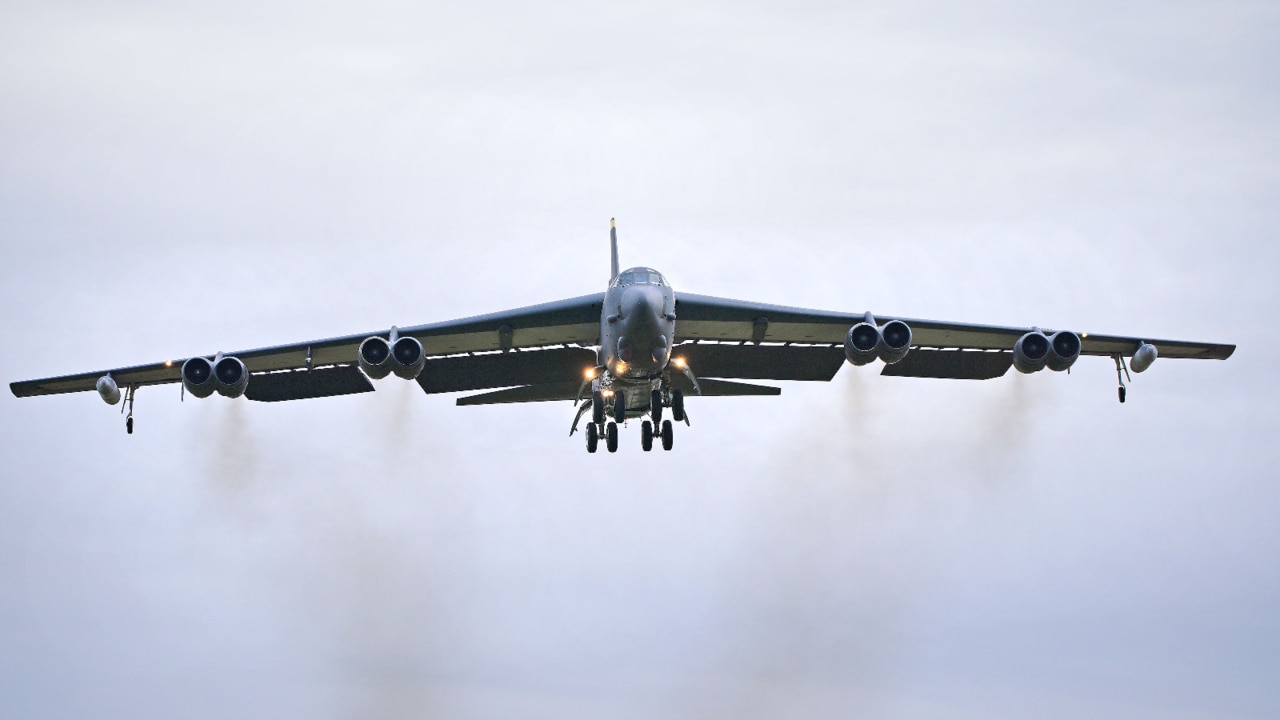US deployment of nuclear-capable B-52 bombers to Australia’s north to remain ‘vigilant’ to China
US-funded upgrade of Tindal airbase in Northern Territory will allow it to house up to six B-52s, as minister says Australia must remain ‘vigilant’.
An expanded Royal Australian Air Force base in the Northern Territory will have space for up to six American nuclear-capable B-52 aircraft as part of a US-funded project that is likely to fuel tensions with China.
Officials in Canberra confirmed that the US-funded aircraft parking apron at RAAF Base Tindal, 320km south-east of Darwin, would be capable of accommodating up to six B-52 aircraft, but said it could also house other aircraft types. They said the project was currently in the design phase, and played down the significance of the development, saying US bomber aircraft had been visiting Australia since the early 1980s and conducting training in Australia since 2005.
But the detailed plans – first reported by the ABC on Monday – suggest the new Labor government has locked in plans initiated under the former Coalition government to expand visits to Australia by US aircraft. The B-52 is a long-range, heavy bomber that can carry out ocean surveillance and anti-ship operations and “can carry nuclear or precision guided conventional ordnance”, according to a US government summary.
Australian Prime Minister Anthony Albanese and U.S. President Joe Biden
Three in four Australians believe US ties increase chance of war involvement in Asia, poll shows
Read more
Four Corners reported the US Department of Defence had budgeted $US14.4m ($A22.5m) for squadron operations and maintenance facilities at Tindal.
It cited US documents as saying: “The [squadron operations] facility is required to support strategic operations and to run multiple 15-day training exercises during the Northern Territory dry season for deployed B-52 squadrons.”
The minister for defence personnel, Matt Keogh, said Australia must remain “vigilant” amid regional tensions, but he did not think the B-52 rotation plans would inflame tensions with China.
“I don’t think so at all,” he told reporters in Hobart.
“I think what’s really important here is that the more we are able to build interoperability with the Americans, growing on that very strong alliance.”
The Chinese foreign ministry spokesperson, Zhao Lijian, told reporters at a regular briefing that China “urges the parties concerned to abandon the outdated Cold War and zero-sum mentality and narrow minded geopolitical thinking, and to do something conducive to regional peace and stability and enhancing mutual trust between the countries.”
He said defence and security cooperation between countries should “not target any third parties or harm the interests of third parties.”
The US ambassador to Australia, Caroline Kennedy, avoided commenting directly on the B-52 plans on Monday, but said the US was determined to support “peace and stability throughout this region” through diplomacy, dialogue and deterrence.
In an interview with ABC News Breakfast, Kennedy said the Indo-Pacific was facing “increasing tensions” and the US would “work with our partners and allies to make this [region] safe”.
Former prime minister Scott Morrison revealed in September last year that he expected the US to increase its military presence in the region while Australia awaits nuclear-powered submarines under the Aukus deal – the first of which were at that stage expected to be ready by the late 2030s.
Senior ministers Peter Dutton and Marise Payne held annual talks with their US counterparts in Washington DC a day after the Aukus announcement, and also flagged plans for more US military deployments to Australia.
Dutton said the alliance with the US must be “match-fit to meet the strategic challenges ahead” and announced “greater air cooperation through rotational deployments of all types of US military aircraft to Australia”, including strategic bombers.
The US defence secretary, Lloyd Austin, said at the time that the US and Australia were exploring “greater and more frequent engagement … with our air capabilities, more training opportunities for our ground forces, and increasing our logistical footprint in Australia as well”.
Sources in Canberra said on Monday that the new aircraft parking apron was one of many capital infrastructure works aiming to support US force posture initiatives, alongside upgrades to airfields, fuel storage facilities, accommodation and training areas.
The Australian government believes the project will boost Australia’s capacity to train with and host international partners, because it also provides functionality for Australian defence force use and could also host other aircraft types.
US bomber aircraft have been visiting Australia for decades, but the launch of an enhanced air cooperation program in early 2017 signalled a determination by both governments to ensure their air forces could operate together seamlessly.
The new details of the project are likely to trigger a reaction from the Chinese government. Chinese state media have previously quoted domestic analysts as saying Australia could “essentially become an overseas bomber base of the US”.
While the Albanese government has sought to “stabilise” the relationship with China through a change in “tone” and several ministers have now met with their counterparts, Canberra’s fundamental defence posture remains as it did under the Coalition.
Earlier this month the prime minister, Anthony Albanese, signed a new security declaration with his visiting Japanese counterpart, Fumio Kishida, to deter “aggression and behaviour that undermines international rules and norms”.
The deal commits Australia and Japan to consult each other on how to respond to regional crises, and is expected to pave the way for greater sharing of intelligence and strategic assessments about China’s intentions.
Albanese and Kishida have both called for peace and stability across the Taiwan Strait and raised concerns about China’s activities in the South and East China seas.
China’s president, Xi Jinping, told the 20th Communist party congress this month that he would never rule out the use of force to achieve “reunification” with Taiwan, a self-governed democracy of 24 million people that he regards as central to his promise to achieve “national rejuvenation”.








No comments:
Post a Comment
Note: Only a member of this blog may post a comment.